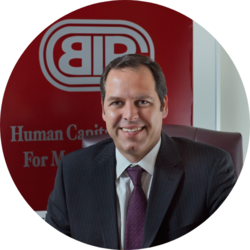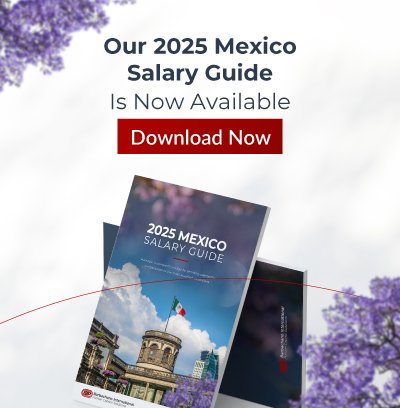
As 2025 comes to a close, leaders across the U.S., Mexico, and Latin America are finalizing next year’s budgets. Line items are being reviewed, forecasts recalibrated, and capital allocations debated. But the smartest executives know that a budget isn’t just a financial document, it’s a mirror reflecting an organization’s priorities, confidence, and leadership capacity.
The truth is simple but often overlooked: your 2026 budget is only as strong as the leaders who will execute it. Most financial plans fail not because of the numbers, but because of the people charged with turning projections into results. The real question every CEO and CFO should ask before signing off is: Does our 2026 budget invest in the right leaders or just the right numbers?
Reinvest: Scaling What Works
For some organizations, 2026 is about momentum. The strategy is clear: double down on what’s working. That might mean expanding a thriving U.S. division into Mexico, deepening nearshoring operations, or scaling high-performing business units that have proven resilient.
The leadership challenge here isn’t just hiring more people. It’s finding bilingual, culturally agile leaders who can replicate success across borders without compromising the company’s DNA. When scaling operations, culture is the first casualty of growth if it isn’t guarded by the right leadership.
A reinvestment strategy requires operational leaders who can deliver consistency across regions. Executives who understand both sides of the border and can manage complexity without losing cohesion. It’s less about adding headcount and more about amplifying excellence.
At Barbachano International, we’ve seen how expansion plans succeed or stall based on one factor: whether the leadership team is capable of maintaining performance and alignment as the organization grows.
Reinvent: Funding the Future
Other organizations are using the 2026 budget as a springboard for change. They’re investing in new ventures, digital transformation, or strategic realignments to capture post-nearshoring opportunities. For these companies, the goal isn’t replication, it’s reinvention.
This is the highest-risk, highest-reward scenario. The leaders required for reinvention aren’t just operators; they’re builders. They must be comfortable with ambiguity, equipped to design structures from scratch, and fluent in bridging global and local teams. In Latin America, that often means navigating multiple business cultures simultaneously: the corporate culture of headquarters, and the local dynamics of new markets.
Research from Harvard Business Review shows that companies led by transformational executives outperform peers in both innovation and long-term adaptability. But those leaders are rare. They require investment, trust, and an environment that allows for experimentation. Budgeting for reinvention means committing to leadership that can see opportunity in uncertainty and turn it into measurable outcomes.
Redundancy: Resetting for Resilience
Some companies are entering 2026 in reset mode. After months of economic pressure, automation shifts, or strategic pivots, many have had to cut costs or restructure. These budgets are cautious by design, focused on protecting what’s essential rather than chasing expansion.
But even when the focus is survival, leadership can’t take a back seat. After a restructure, the people who stay often carry more weight, more uncertainty, and less clarity about what comes next. Cutting costs may stabilize the balance sheet, but it doesn’t rebuild trust. That takes leadership.
This is when turnaround leaders prove their value, those who can bring stability without losing empathy, make hard decisions without losing credibility, and help a team find its footing again. According to Deloitte’s Global Human Capital Trends, companies that invest in leadership resilience recover faster and stronger after disruption. A budget that focuses only on what to cut, instead of who can rebuild, risks missing the real opportunity: turning recovery into renewal.
The Leadership Audit as a Financial Tool
The most expensive budget error isn’t a miscalculated forecast. It’s a leadership gap: having the wrong executive in a critical seat when execution matters most. A CFO can model scenarios and a CEO can define strategic intent, but neither can deliver results without the right leaders translating plans into progress.
Before finalizing your 2026 budget, take a step back. Conduct a leadership audit as seriously as you review your financials. Identify who’s ready for expansion, who’s capable of transformation, and who can stabilize the business when conditions tighten.
At Barbachano International, we believe that every strategic plan is, at its core, a people plan. The 2026 budget will set the stage for your organization’s next chapter, but leadership will determine whether it’s one of reinvestment, reinvention, or redundancy.
So before you approve the final version, ask one simple question:
Are the leaders who got us here the same ones who can get us there?
The answer will define your 2026 success.

By Fernando Ortiz-Barbachano
President & CEO of Barbachano International
Barbachano International (BIP) is the premier executive search and leadership advisory firm in the Americas with a focus on diversity & multicultural target markets. Since 1992, BIP and its affiliates have impacted the profitability of over 50% of Fortune 500 Companies. BIP has been recognized by Forbes as Americas’ Best Executive Search Firms and currently ranks #8 and #3 on the West Coast.

